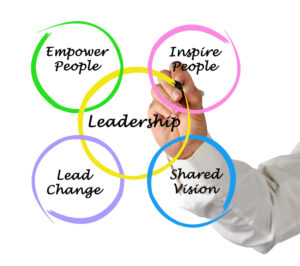 by Adam Bryant
by Adam Bryant
As organizations shift from command-and-control leadership to more decentralized decision-making, the “frozen middle” is melting—and managers have to step up.
At the risk of generalizing, I find that managers typically fall into one of two camps—those who are most comfortable following a playbook that rarely changes, and those who relish the idea of writing a new one for their job. And in this era of endless disruption and ambiguity, the managers who will get ahead are the ones who see this time as an opportunity, not a headache.
Companies are pushing more decision-making to their frontline managers, who in turn have to step up and make some tougher judgment calls. As just one example, Amazon announced in late 2021 that instead of issuing a company-wide policy on in-person work, its directors would decide which days their teams needed to be in the office.
These new freedoms—or pressures—will create a difficult period of adjustment for the managers who contribute to their company’s “frozen middle.” That is the term for the group of managers who are the most resistant to change, and who are an endless source of frustration for C-suite leaders trying to implement a transformation strategy. A CEO I know once said shortly after joining a company that “there are too many policemen here,” referring to those employees who felt their job was to blow the whistle on anything that fell outside their that’s-not-how-we-do-things-around-here guardrails. The optimist in me would like to think that as decision-making becomes more decentralized, managers can no longer afford to have that attitude.
Handling hybrid
One example in which managers will need to become leaders: when managing culture in a hybrid world. There is no one-size-fits-all solution. Companies are still trying to find the right balance between remote and in-person work, and the best answer is likely different depending on how much collaboration the work requires.
Although many bosses would like to see their employees back in the office, overly strict rules run the risk of sending people fleeing to more flexible employers. “We expect that there will be teams that continue working mostly remotely, others that will work some combination of remotely and in the office, and still others that will decide customers are best served having the team work mostly in the office,” wrote Amazon CEO Andy Jassy in a memo to employees. “We’re intentionally not prescribing how many days or which days—this is for directors to determine with their senior leaders and teams.”
It is easy to imagine the tension that might cause within the company. What if you were on a team with a boss who decides that she wants everyone in the office most days, while colleagues in another department have more flexibility?
But that is one of the realities of leadership compared to management—you often have to own the fact that you may make decisions that are not popular. To keep up, human resources will have to shift from telling people what to do to providing guidance on how to figure out what to do. It’s a point that was crystallized recently by Harsha Jalihal, the chief people officer at MongoDB, a New York–based technology platform provider, in my interview with her.
“We are no longer in a place where leadership is all about just getting the work done,” she said. “It’s become so much more than that. There’s so much ambiguity. I cannot write a rulebook for leadership development anymore. I can’t write a 100-page policy document about whether you should let an individual on your team work in a flexible model or not.
“You’re the manager. You know the person. You know what works for them. You know their challenges. Here’s a framework; make the call,” she continued. “That’s a tough and very uncomfortable position for many people to be in. I think HR has a role to play in teaching people how to make difficult decisions.”
It is a time for everyone to “lead from your seat,” a phrase I first heard more than a decade ago, when I interviewed Terri Ludwig, who at that time was CEO of the nonprofit Enterprise Community Partners (Ludwig is now president of Ballmer Group, a US organization promoting social mobility based in Bellevue, Wash.). “Regardless of where you are, regardless of your role within the organization, it is my job to make sure that you feel empowered to lead from your seat,” Ludwig told me then. “This is about recognizing that within any role in the organization, you can influence change and outcomes, and we all have to do that for us to be truly innovative, to deliver on our mission, to have breakthroughs.”
At the time, I was struck by both the inspiration and aspiration of the phrase—that is to say, from wherever they sit in the organization. Everybody should think beyond the job description they were handed, look for ways to contribute to the broader organization’s goals, and help rewrite the playbook. But leading from your seat is increasingly becoming part of every manager’s job description—and it is fast becoming table stakes.



